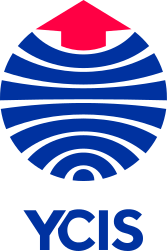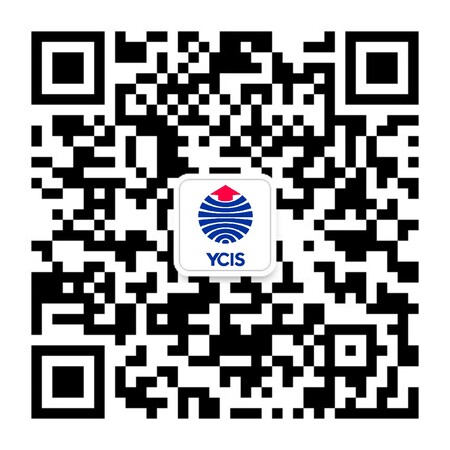Go Back
News
News
Soft Skills in YCIS Beijing’s Design and Technology Programme
News
21 Nov, 2016
10 : 00
One of the core tenets of the Yew Chung International School of Beijing school motto is to “Integrate with Technology;” our upcoming Open Day on December 1, hosted by our Secondary School Vice-Principal Don Collins, will explain how the school effectively utilizes technology in the classroom and beyond. Perhaps the most clear-cut example of this meld between technology and education is YCIS Beijing’s Design and Technology Programme, a class that utilizes cutting edge devices and software to imbue in students creativity, problem-solving, and other soft skills necessary for success in their post-academic careers.
Below, Nicolas Manchematin, our newly arrived Design and Technology teacher, explains his teaching philosophy and why he believes the programme to be such an advantageous and mind-expanding opportunity for our Secondary School students.
Please introduce yourself.
My name is Nicolas Manchematin. I’m originally from France, but I moved to England five years ago where I got my teaching degree. After this I taught Secondary School Design and Technology for four years. As I was a chef in France before I became a teacher, my first Design and Technology specialization is food technology, while my second specialization is resistant material. I taught both subjects in the UK. I arrived in China about three months ago. I’m very excited to be here! Because this is my first time in China I did my best to prepare, but all the preparation I did ended up being useless. I’ve found that it’s only until you’re here that you’re able to really process everything.
Please introduce some key aspects of YCIS Beijing’s Design and Technology programme.
We offer the Design and Technology programme to students from Years 7-11. In Years 7-9, we try to give them as varied as possible of an experience. We have a textile project, some computer design, woodworking, and more. We try to give them a taste of all the different areas.
In IGCSE, we focus on graphics and architecture. Graphics happens to be the core of my specialty, so that works out well.
What is the goal of this programme?
My overall goal in Design and Technology is to try and make the gap between theory and practice disappear. I would like to try to develop in students a practical cleverness and to be as comfortable with a piece of paper as with different tools we use in class. We also focus on other “soft skills,” such as how to organize oneself, move within a workshop, etc.
What skills does this programme seek to develop in students?
The main thing I’m always saying is the attitude during the lessons, including the way the students interact with the environment and tools, the other students, the teacher, the task, and the materials. It’s all about learning organization, time management, and how to communicate ideas; these are wide and general skills. I don’t focus on the outcome but on the process. I look for independent and comfortable students.
This learning environment can be quite a change for them as we aren’t in a classic classroom but a workshop; the key is to have them as comfortable here as anywhere else. In this way they can learn to challenge themselves.
What are some of the most interesting, unique, or exciting projects students participate in in YCIS Beijing’s D&T course?
Two of our key tools are our 3D printer and Autodesk software. We’re only starting to understand the possibilities of this machine. This one is much nicer than the 3D printers I’ve used before. It’s a very exciting tool, but it’s only used to produce things; the even more exciting aspect is using the Autodesk software to design the things to print. Mastering this software alone allows you to find a job very easily, so again it’s a practical component of the course.
Our Years 8-9 students are designing plastic structures with these tools. They’re designing cars and vehicles which we’ll then combine with electronics to make the pieces of plastic fly or to make them move. This subject is really quite central to what the school is trying to develop: developing around soft tech and trying to make good use of it. The 3d printer itself is no different from a hammer; in the end, these tools are just here to serve us. It’s the creativity and the design that makes the difference.
What are the strengths of YCIS Beijing’s D&T Programme?
Because of the size of the school and because the class I offer to IGCSE kids is an elective, we tend to be able to work in smaller groups. There are 15 this year in Year 11 and 9 students in Year 10. This allows us to work like a design office rather than a classroom; it’s a huge advantage as the students have more freedom rather than follow a more set formula. I give them a framework to work with and feedback along the way, but the rest of the project they get on with themselves. The main goal is to try to have them take ownership of their projects.
How can the skills that students learn through Design and Technology help to prepare them for life after YCIS Beijing?
As mentioned, kids in this programme will learn a lot of general skills; I won’t focus on one particular aspect. It’s not about drawing, for instance, but rather about the thinking. We will equip them with life skills: problem solving, identifying problems, and more. We try to develop in them a critical eye.
Additionally, planning a project from A-Z. It’s important for them to realize that creativity doesn’t just happen, but rather happens by following steps. The more you’re comfortable with the process of being creative, the more creative you can be. Once students are taught to identify a problem, they can start to come up with suggestions. Only through working on those suggestions will students find a way to create something brand new. This is one of the few subjects where students are rewarded for their mistakes. In the end, even if the solution they come to doesn’t work, as long as they can at least evaluate it and say why, they’ll be able to earn a very good grade.









